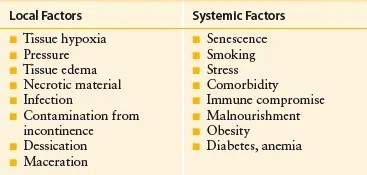The mother of a 2-day-old infant girl expresses concern about a "flea bite" type rash on her daughter's body. The nurse identifies a pink papular rash with vesicles superimposed over the thorax, back, buttocks, and abdomen. Which explanation should the nurse offer?
The rash is due to distended oil glands that will resolve in a few weeks.
This rash is characteristic of a medication reaction.
The healthcare provider is being notified about the rash.
This is a common newborn rash that will resolve after several days.
The Correct Answer is D
The rash described, pink papular rash with vesicles, is consistent with erythema toxicum neonatorum, which is a common skin condition that affects up to 50% of newborns. It typically appears within the first few days of life and resolves without treatment within 5-7 days. The rash is benign and does not require any specific treatment or intervention.
The rash is not due to distended oil glands or a medication reaction, and there is no indication in the scenario that the healthcare provider needs to be notified about the rash. Erythema toxicum neonatorum is a self-limited condition that resolves on its own, so reassurance and education for the parents are appropriate interventions.
Nursing Test Bank
Naxlex Comprehensive Predictor Exams
Related Questions
Correct Answer is D
Explanation
The rash described, pink papular rash with vesicles, is consistent with erythema toxicum neonatorum, which is a common skin condition that affects up to 50% of newborns. It typically appears within the first few days of life and resolves without treatment within 5-7 days. The rash is benign and does not require any specific treatment or intervention.
The rash is not due to distended oil glands or a medication reaction, and there is no indication in the scenario that the healthcare provider needs to be notified about the rash. Erythema toxicum neonatorum is a self-limited condition that resolves on its own, so reassurance and education for the parents are appropriate interventions.
Correct Answer is ["B","D"]
Explanation
The age-related factors that may factor into this client's wound healing are: Decreased epidermal turnover: As people age, the turnover of skin cells decreases, resulting in slower wound healing. This can prolong the healing process and increase the risk of complications.
T-cell function decrease: The immune system's function, including T-cell function, tends to decline with age. T-cells play a crucial role in the immune response and wound healing. Decreased T-cell function can impair the body's ability to fight infection and promote efficient healing.
Insulin resistance and pigmentation changes are not directly age-related factors that impact wound healing. Insulin resistance is a condition related to impaired glucose metabolism and can affect wound healing in individuals with diabetes or other metabolic disorders, but it is not necessarily an age-related factor. Pigmentation changes are primarily cosmetic and do not directly affect the physiological processes involved in wound healing.

Whether you are a student looking to ace your exams or a practicing nurse seeking to enhance your expertise , our nursing education contents will empower you with the confidence and competence to make a difference in the lives of patients and become a respected leader in the healthcare field.
Visit Naxlex, invest in your future and unlock endless possibilities with our unparalleled nursing education contents today
Report Wrong Answer on the Current Question
Do you disagree with the answer? If yes, what is your expected answer? Explain.
Kindly be descriptive with the issue you are facing.
